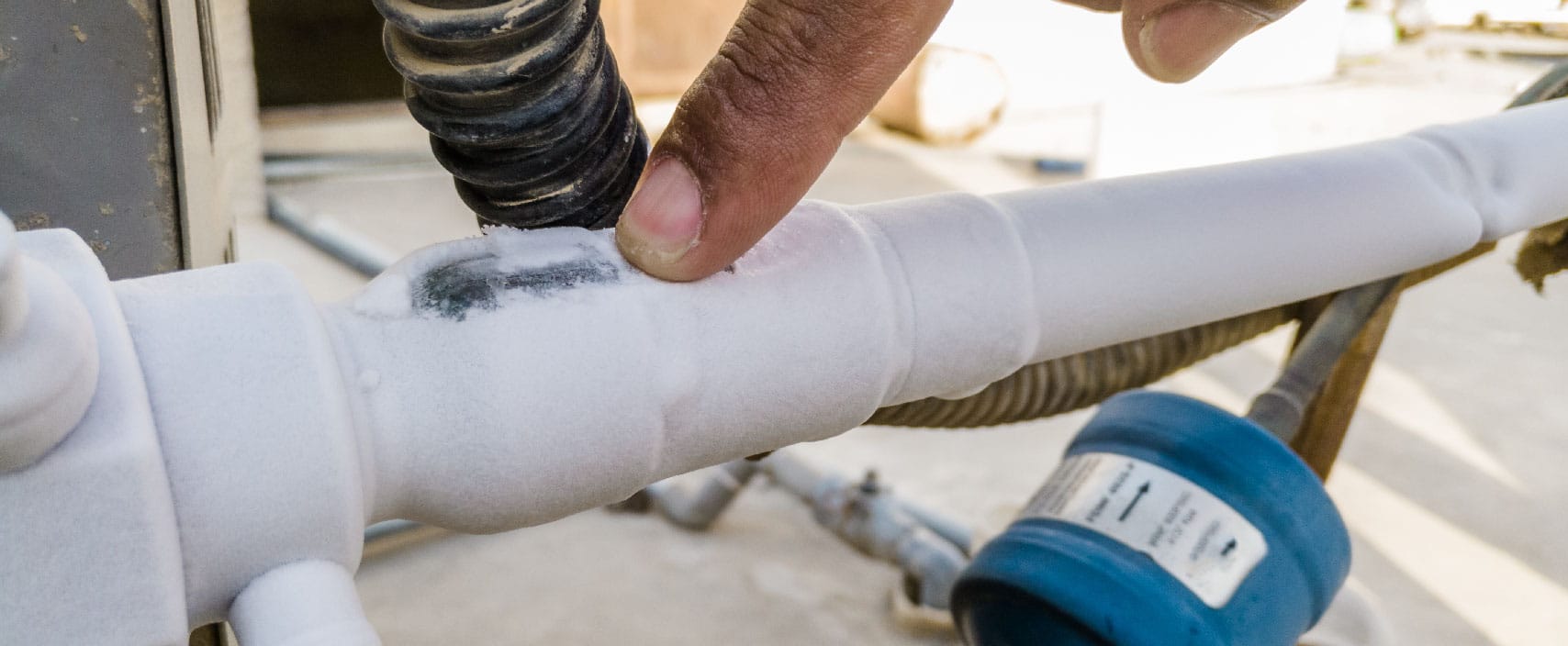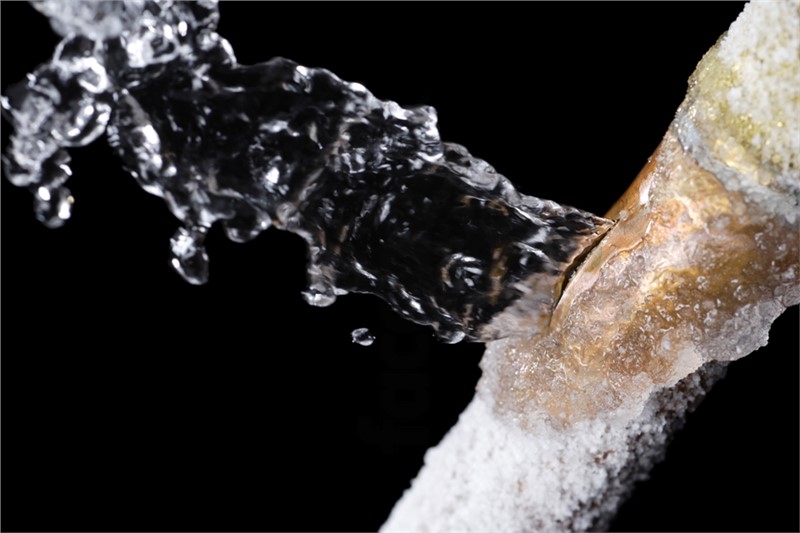Actions to Take If My AC Pipe Is Frozen - Quick Solutions for Thawing
Actions to Take If My AC Pipe Is Frozen - Quick Solutions for Thawing
Blog Article
Are you currently trying to locate info Why Is Ice On My Outside Air Conditione?

Introduction
Uncovering that your air conditioning pipeline is iced up can be worrying, especially throughout warm summertime when you count on your air conditioning system the most. Comprehending what to do in such a situation is important to avoid more damage to your cooling system and guarantee your convenience inside your home.
Recognizing the Causes
Numerous elements can add to the freezing of an air conditioning pipeline. Comprehending these reasons can aid you attend to the issue properly.
Absence of Airflow
One common root cause of a frozen air conditioner pipeline is inadequate air movement. When the air movement over the evaporator coil is limited, it can trigger the coil to drop below freezing temperature level, resulting in ice formation on the pipe.
Reduced Refrigerant Levels
Not enough refrigerant degrees in your air conditioner system can additionally lead to a frozen pipeline. Low cooling agent levels can create the pressure in the system to drop, causing the freezing of wetness on the evaporator coil.
Cold Weather Conditions
In cooler climates, freezing temperatures outside can add to the freezing of a/c pipes. If your air conditioner system is not appropriately shielded or if there are leakages in the ductwork, chilly air can penetrate the system, causing the pipeline to ice up.
Dirty Air Filters
Unclean or clogged up air filters can restrict air flow in your AC system, resulting in various concerns, consisting of an icy pipeline. It's necessary to change or clean your air filterings system consistently to guarantee correct airflow and prevent ice build-up.
Signs of a Frozen AC Pipe
Acknowledging the indications of a frozen air conditioner pipeline is important for punctual action.
Decreased Airflow
If you see a significant decline in air movement from your vents, it could indicate a frozen pipeline.
Ice Buildup on the Pipe
Noticeable ice build-up on the cooling agent line or the evaporator coil is a clear indicator of a frozen a/c pipeline.
Odd Sounds from the Unit
Uncommon noises, such as hissing or gurgling, originating from your AC unit can signify that there's ice existing on the pipeline.
Immediate Actions to Take
When confronted with a frozen AC pipeline, it's important to act swiftly to stop further damages to your air conditioning system.
Turning off the AC
The primary step is to turn off your a/c to avoid the system from running and aggravating the concern.
Checking for Blockages
Inspect the area around the interior device for any type of blockages that may be blocking airflow, such as furniture or drapes.
Defrosting the Pipe
You can utilize mild methods like positioning towels taken in warm water around the icy pipeline to help thaw it slowly.
Safety nets
Taking safety nets can aid stay clear of future incidents of an icy air conditioning pipeline.
Routine Maintenance Checks
Schedule regular maintenance talk to an expert HVAC specialist to ensure that your air conditioning system is running effectively.
Changing Air Filters
On a regular basis replace or cleanse your air filters to prevent airflow limitations and keep ideal performance.
Protecting Exposed Pipes
If your air conditioner pipes are exposed to cold temperatures, think about insulating them to stop cold throughout cold weather.
Seeking Professional Help
If DIY techniques fall short to solve the concern or if you're unclear regarding exactly how to proceed, it's best to seek aid from a certified HVAC professional.
When DIY Methods Fail
If your efforts to thaw the pipeline or address various other concerns are unsuccessful, it's time to hire a specialist.
Importance of Hiring a Professional HVAC Technician
A certified HVAC specialist has the know-how and tools necessary to identify and fix problems with your a/c system safely and successfully.
Conclusion
Taking care of an icy AC pipeline can be a frustrating experience, but understanding how to respond can assist lessen damage and restore comfort to your home. By comprehending the causes, recognizing the indications, and taking timely activity, you can effectively deal with the problem and stop future events.
Frozen AC Line: Why It Happens & What To Do About It
A frozen AC line can be a rather peculiar sight in a place like Phoenix, Arizona where nothing ever freezes. In this post, we’ll discuss what makes an air conditioner line frozen – and what you can do about it.
Dirty Air Filters
Did you know that you should be cleaning or replacing your air filters on a monthly basis? Failing to do this can result in airflow issues that, in turn, cause your evaporator coils and lines to freeze over. You’ll notice a buildup of ice on both components, although the buildup on your pipes will, of course, be more evident unless you open your air condition up to reveal the coils.
What To Do About It
Give your air filter a good cleaning if it’s reusable. If not, replace the filter outright. Next, switch your air conditioner’s fan setting on and leave it there for 2-3 hours. This will draw warm air in, helping to thaw your evaporator coil. You can also check out this article for some tips on cleaning the coils themselves if you’d like to speed the process up. Before you switch the unit back to its normal state, make sure the supply vents are completely unobstructed and free of dust or other debris.
If you keep having this issue even after replacing your filters regularly, contact a local HVAC repair company and have them inspect your evaporator coil, ductwork, and any other components that may be at fault. If you live in the Phoenix, Arizona area, give American Home Water and Air a call.
Low Refrigerant Levels/Leakage
What To Do About It
Contrary to what air conditioner “recharge” companies often tell their clients about refrigerant, it should never need to be simply refilled. You see, refrigerant runs in what experts refer to as a “closed loop.” Refrigerant really shouldn’t be leaving that loop. If it is, you’ve got a leak.
Paying someone to come and pump more refrigerant into your system (aka “recharge” it) isn’t the solution. Doing that will simply kick the can down the road. Besides, refrigerant leaks can be harmful to the environment and people in your home.
Rather, you need to take care of the leak with the help of a technician. Check out this article for some more information about dealing with air conditioners that are leaking refrigerant. Before you contact a technician, switch your thermostat to the off position. Then, switch the fan setting on and let it run for 2-3 hours so the unit can thaw.
Improper Temperature Setting
Improper temperature settings can also cause a drop in your air conditioner’s pressure. What many people don’t realize is that air conditioners are actually designed to run when temperatures have fallen above roughly 60 degrees Fahrenheit. If you run the unit when it’s cold outside, you’ll run into many issues, including frozen components.

As an avid person who reads about What Do I Do If My AC Pipe Is Frozen, I figured sharing that segment was important. Sharing is good. Helping people is fun. I love reading our article about How can I fix an air conditioner’s frozen pipe?.
Call Today Report this page